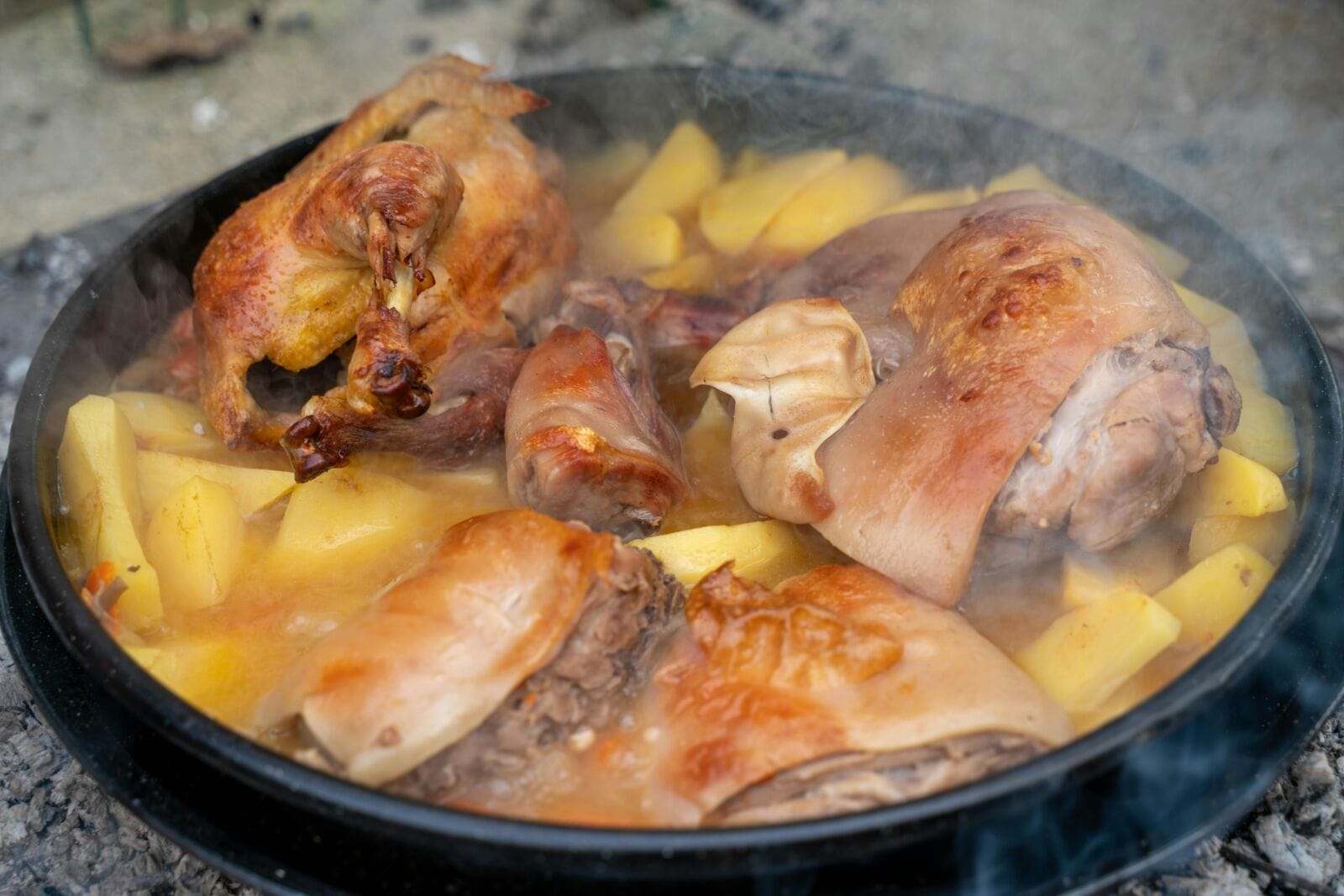Let’s be real, if you’ve ever been mid-scroll through a cozy soup recipe or sourdough tutorial, you’ve probably seen those two little words: Dutch oven. And if you don’t have one, you might’ve asked yourself, “Do I actually need this, or is it just another pricey kitchen flex?”
Turns out, the Dutch oven isn’t just for food bloggers and French grandmas. It’s one of the most versatile, wellness-friendly tools you can have in your kitchen. It can seriously level up your clean cooking game, from slow-simmered stews to toxin-free baking.
So, before you commit (or dismiss), let’s break down what it is, what it does, and if it’s really worth the hype.
FEATURED NEWS: How the West Valley evolved into hotbed for innovation and growth
INDUSTRY INSIGHTS: Want more news like this? Get our free newsletter here
What Is a Dutch Oven?
A Dutch oven is basically the multitasker of your kitchen: part heavy-duty pot, part slow-cooking champion. It’s typically made of cast iron and often coated in enamel, which means it holds heat like a dream and distributes it evenly. Unlike your average pot or nonstick pan, a Dutch oven can go from stovetop to oven without blinking. Sear in it, bake in it, or simmer in it, because it’s built to do it all.
What sets it apart is its weight and design. The thick walls and tight-fitting lid create the perfect low-and-slow environment for building flavor and keeping moisture locked in. Whether you’re making a veggie-loaded soup or a crusty loaf of sourdough, it gives your food that home-cooked depth you just don’t get with lighter cookware.
Why Do Health-Conscious Cooks Love Them?
A Dutch oven might be your new best friend if you’re trying to eat clean, reduce toxins, and cook more whole foods. First, there’s no synthetic coating to worry about. Unlike many nonstick pans, an enameled Dutch oven doesn’t leach questionable chemicals into your food, even at high temperatures.
It also promotes a slower, more mindful style of cooking that encourages whole ingredients, rich flavors, and less reliance on oils or additives. Because it retains heat so well, you can simmer beans, stews, or broths on low for hours, boosting taste and preserving nutrients. Plus, you’ll use fewer dishes since everything happens in one pot, which makes clean-up (and sticking to your healthy habits) that much easier.
What Can You Make in a Dutch Oven?
A Dutch oven does more than soup, stew, and sourdough—although, yes, it crushes those. This one-pot wonder is surprisingly flexible, especially when you’re trying to eat clean without creating a mountain of dishes.
From nutrient-packed mains to cozy, better-for-you treats, here’s how to put it to work.
Roasted Veggies With Serious Flavor
Skip the sheet pan and try roasting your veggies in a Dutch oven instead. The enclosed heat creates deeper caramelization without drying them out. Toss chopped sweet potatoes, cauliflower, or carrots with a bit of olive oil and herbs, then roast with the lid off for crispy edges and tender centers. Bonus: everything stays warmer longer, so second helpings are still hot.
Perfectly Cooked Whole Grains
Quinoa, farro, and brown rice cook beautifully in a Dutch oven. The steady, even heat helps prevent scorching or uneven texture, and the tight lid locks in steam so you don’t lose moisture. Make a big batch and use it throughout the week for bowls, salads, or veggie wraps.
Clean One-Pot Meals
Think veggie-packed curries, lentil bakes, or chickpea tagines. A Dutch oven can sauté, simmer, and finish in the oven without dirtying another dish. The deep sides make it easy to layer in flavor, and you can go heavy on spices or fresh herbs without worrying about sticking or burning like you might in a thinner pan.
Better-for-You Fruit Desserts
It’s not just a dinner tool. A Dutch oven is great for making clean desserts like baked apples, spiced pear crisps, or berry compotes. The gentle heat helps fruits break down without added sugar, and you can serve them straight from the pot. Add a dollop of yogurt or coconut cream and call it done.
So, Do You Really Need a Dutch Oven?
It depends on your cooking style. If it stops at reheating leftovers or you’re team microwave all the way, you’re probably fine without one. But if you care about cooking clean, flavor-packed meals with minimal effort and maximum versatility, a Dutch oven might just become your kitchen MVP.
It’s a low-fuss way to make healthy, home-cooked food taste amazing. And with proper care (like hand washing with mild soap, skipping metal utensils, and drying it thoroughly), it’ll last for years. Think of it as a wellness investment that pays off every time you simmer a stew, roast a veggie medley, or bake a cozy fruit crisp.
So no, it’s not just for Instagram chefs. It’s for anyone who wants real food, done well, without five pans and a pile of dishes.




